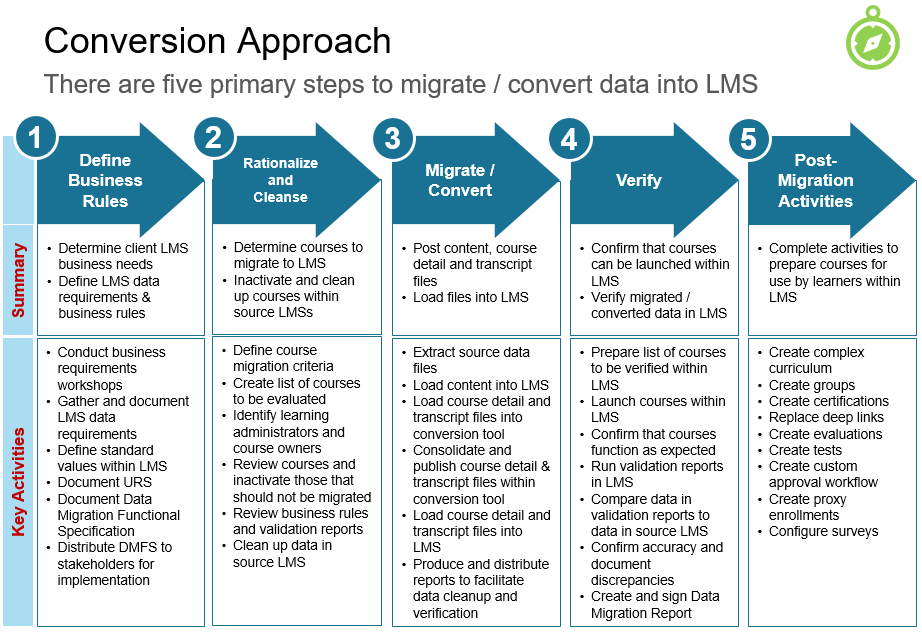
The “Five to Seven” Process Framework
There are a number of frameworks we use regularly to help effectively manage projects. One such framework is what we call, “Five to Seven”.
The “Five to Seven” framework is essentially the simple idea that most processes can and should be explained in five to seven steps. An overall process should be explained in five to seven steps. A process step can and should be explained in five to seven sub-steps. A problem can be solved in five to seven steps. A project can be completed in five to seven steps. A vendor can be selected in five to seven steps. An approach can be explained in five to seven steps. You get the picture.
This isn’t a hard-written rule. If something can be easily explained and well understood in four steps, then that is absolutely the right thing to do. Sometimes three steps are completely appropriate. But “Five to Seven” is our starting point. At Project Outlier, we have found that “Five to Seven” usually provides enough detail so people at all levels understand yet not so much information that everyone gets lost or stuck in the details.
Here are two real life “Five to Seven” examples from recent client engagements.
One of our clients needed to migrate data from numerous source systems into a SaaS platform. We worked with the client to understand the fairly generic challenge within their specific context. Then we outlined a five step approach to deliver a solution that included:
- Defining the migration requirements and business rules,
- Cleansing the source data,
- Migrating the data,
- Verifying the migrated data, and
- Completing post-migration tasks.
A different client struggled to collaborate across internal business units when responding to strategic business development opportunities. We laid out a straightforward approach to address their challenges:
- Document the current processes (Note: each business unit had their own processes!),
- Assess the current processes,
- Recommend process improvements,
- Prioritize and select the improvements to be implemented,
- Implement the prioritized improvements, and
- Evaluate the results.
“Five to Seven” is particularly helpful when facing complex situations. Yet it’s also potent when one’s natural instinct is to “just do it”. When facing a problem, people often want to just solve the problem. Yet “Five to Seven” is a great framework to ensure that the right problem is solved.
So instead of:
- Solve the problem (essentially, “Ready? Fire!”)
try:
- Define the problem,
- Determine the underlying cause or causes of the problem,
- Identify and select options to solve the underlying cause or causes,
- Implement the selected option(s),
- Confirm that the problem has been solved.
What we and our clients love about the “Five to Seven” framework is that it helps get and keep the entire project team and all stakeholders on the same page. And when everyone is on the same page, the odds of completing projects on-time, within budget, and with high quality skyrocket!
Here is a cleansed version of our first example. As you can see, the overall approach includes five steps. Then, each primary step includes five-to-seven key activities (aka sub-steps).

Try the “Five to Seven” process framework in your workplace. We are confident that it will help you more effectively convey complex subject matter to a variety of audiences. If you find this framework to be helpful, we’d love to hear about it!
Spread the word

About the Author
Dave Coddington
In addition to actively service clients in various project management roles, I am privileged to lead the great team we have at Project Outlier. I am a strategist, an entrepreneur and a creative. I have an undergraduate degree in Business Administration and Economics and an MBA with an emphasis in Information Systems Management. You can find more about me by visiting my personal blog, and I’d love to connect with you on LinkedIn
Want to know more? Contact us now!
[fusion_builder_container hundred_percent=”yes” overflow=”visible”][fusion_builder_row][fusion_builder_column type=”1_1″ background_position=”left top” background_color=”” border_size=”” border_color=”” border_style=”solid” spacing=”yes” background_image=”” background_repeat=”no-repeat” padding=”” margin_top=”0px” margin_bottom=”0px” class=”” id=”” animation_type=”” animation_speed=”0.3″ animation_direction=”left” hide_on_mobile=”no” center_content=”no” min_height=”none”][Form id=”6″]
[/fusion_builder_column][/fusion_builder_row][/fusion_builder_container]
